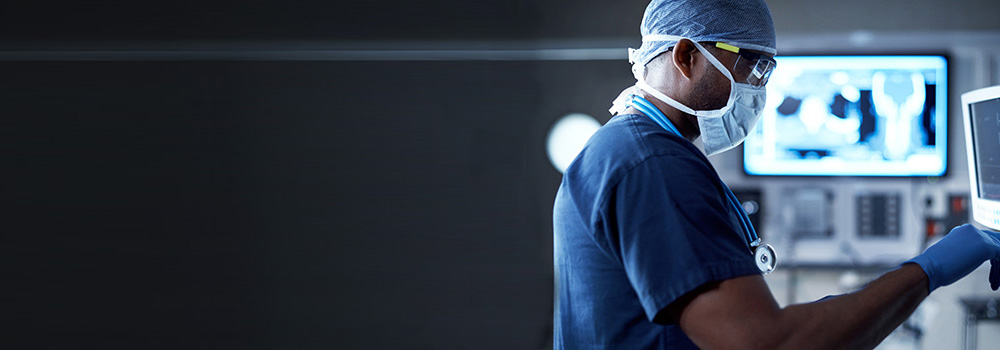HL SELECT UK GROWTH SHARES
A new holding - into the future of radiology
Fund changes

HL SELECT UK GROWTH SHARES
Fund changes

Steve Clayton - Fund Manager
30 June 2017
We have recently built a position in Medica Group, which is the UK’s leading business in Teleradiology.
Hospitals need radiology departments to perform X-rays and scans to investigate injuries and disease progression in a non-intrusive fashion. This requires radiographers to operate the machinery and radiologists to interpret the scan results and advise the consultants treating the patient accordingly.
It takes a long, long time to train a radiologist, as much as 14 years to Consultant level, and once fully qualified, they are not cheap to employ. The NHS is facing an increased shortage of trained radiologists because many are approaching retirement but far fewer are entering the profession to maintain the talent pool.
The problem is especially acute out of hours. Patients may be admitted to A&E at any time, following accidents or where inpatients’ symptoms suddenly require urgent investigation. Hospitals do not keep expensive radiologists loitering around on the off-chance that something might crop up.
The traditional solution was to have one on-call. In the event of an emergency, the on-call radiologist would be telephoned to come in, sharpish. That would then lead to them either working fewer hours or not at all the next day, compounding the broader shortage of radiologists affecting the NHS.
Medica provide a teleradiology solution, Nighthawk, which is being widely adopted by NHS Trusts and the private sector. Teleradiology allows technicians to perform the scans and X-rays, and have these sent digitally to a radiologist working remotely. Medica’s system allows the radiologist to see not just the scan, but the patient’s broader medical history too, allowing a high quality of interpretation of the data.
Medica’s radiologists either work from their homes, using kit supplied by the company, or at one of a number of centres Medica operate. At any one time out of hours, Medica typically has a panel of ten radiologists on shift, allowing them to have specialists on hand when it might normally be hard for an individual hospital to access such skills.
Scans can be sent, interpreted and sent back to the hospital in 25 minutes. An on-call radiologist might still be in their car at this point. This speed of service is backed up by a clinical standards regime established for Medica by their Clinical Director, Dr Stephen Davies, who was a former President of the Royal College of Radiologists.
Over half of NHS Hospital Trusts now use Medica’s Nighthawk out of hours service. The cost per scan might be higher, but by only paying for scans as they are needed, rather than keeping capacity “warm” at all times, the Trusts can get a better financial outcome and a superior clinical service, not least because of the speed of processing the scans.
Medica’s model is strong and they dominate their field. Over time we see excellent prospects for additional Hospitals to sign up, although, this of course is not guaranteed. We also see the possibility for more routine work to be handled via Teleradiology as a result of Medica’s ability to have a number of specialists available on demand. Medica maintain their own capacity pool by offering flexible working conditions. Radiologists can choose to work as many shifts as they wish, and be well paid for the work they do.
At the moment, less than 5% of NHS radiology work is outsourced. We believe this could rise substantially over time, especially as Hospitals recognise the benefit of having a larger pool of specialists available - making the service attractive during normal working hours.
It’s a symbiotic relationship, benefitting both Radiologists and Hospitals, with patient scans seen faster and by the most appropriate specialist for their condition. We believe there could be more growth opportunities for Medica. Other medical processes may be suitable candidates for a remote service, for example having Consultant Pathologists to review reports. Other nations also face capacity challenges, potentially offering international opportunities for Medica.
We think it’s a unique business, with a powerful market position by virtue of its access to a large pool of highly qualified, scarce professionals, superior clinical models and ability to deliver a service that improves outcomes for clinicians, patients, and hospitals alike. Longer term growth prospects seem exciting in our view. Medica is still quite small, valued at around £250m, but we rather suspect that may change as the business grows in the years ahead. We’ve decided initially to build a position of 2% of the fund.
Find out which companies fit our approach for HL Select UK Shares
Please read the Key Investor Information Document before you invest.

Important information: Investments can go down in value as well as up, so you might get back less than you invest. If you are unsure of the suitability of any investment for your circumstances please contact us for advice. Once held in a SIPP money is not usually accessible until age 55 (rising to 57 in 2028).
The maximum you can invest into an ISA in this tax year 2025/2026 is £20,000. Tax rules can change and the value of any benefits depends on individual circumstances.
Invest in an ISAYou can place a deal online now or top up an existing account first, using your debit card.